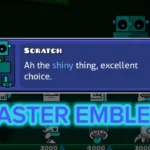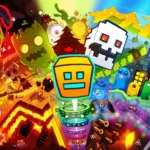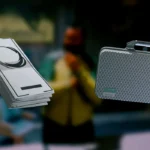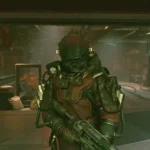Are you ready to embark on an interstellar adventure like no other? Well, get your spacesuits on because we’re diving into the captivating world of Starfield! Today, we’re discussing a trait that has players buzzing with excitement – Kid Stuff. Is this feature worth all the hype, or is it just child’s play? Join me as we explore the ins and outs of the Kid Stuff trait in Starfield, uncover its benefits, and delve into the age rating controversy. Strap in, fellow space explorers, because we’re about to blast off into a blog post that’s out of this world!
Understanding the Kid Stuff Trait in Starfield
In the vast expanses of Starfield, amidst the cosmic ballet of stars and planets, lies an intricate web of gameplay elements that shape the player’s journey. Among these is the Kid Stuff trait, a feature that connects the player to a virtual family within the game’s universe. This trait is more than a quirk; it’s an ode to the bonds that tether us to home, no matter how far we venture into the unknown.
By embracing the Kid Stuff trait, players commit to sending a portion of their hard-earned credits back to their in-game parents. Fextralife paints a vivid picture of this dynamic, highlighting the delicate balance between exploring the final frontier and fulfilling familial duties. It’s a poignant reminder of the connections that remain, like invisible threads, across light-years of space.
Yet, this commitment comes with its own set of challenges. With a 2% deduction from the player’s weekly earnings, the Kid Stuff trait adds a layer of financial strategy to the gameplay. Players must navigate the complexities of interstellar economics while honoring their character’s background, a true test of their ability to manage resources effectively.
Benefits of the Kid Stuff Trait
However, the Kid Stuff trait transcends mere monetary transactions. It opens up a universe of heartfelt interactions and tangible rewards that enrich the player’s experience. Visiting one’s parents in the game is not just a dutiful check-in; it’s a chance to reconnect and receive items that carry emotional weight and practical value.
Imagine the joy of acquiring Sir Livingstone’s Pistol, a weapon with a storied past and superior firepower, handed down through the family. Or the comfort found in Grandpa’s Meatloaf Recipe, a digital representation of cherished family recipes that evoke the warmth of home amidst the cold vacuum of space.
| Trait Name | Description | Financial Impact | Rewards |
|---|---|---|---|
| Kid Stuff | Regular contributions to in-game parents | -2% of credits weekly | Sir Livingstone’s Pistol, Grandpa’s Meatloaf Recipe, etc. |
The Kid Stuff trait not only deepens the gameplay but also adds a layer of storytelling, blending the player’s narrative with that of their in-game family. It’s a testament to the game’s commitment to creating a universe where actions have consequences and relationships carry weight. This feature, though seemingly small, adds texture to the tapestry of Starfield’s universe, making it a richer, more immersive experience.
Ultimately, the Kid Stuff trait invites players to ponder the question: How does one balance the call of adventure with the ties of family? It’s a dilemma that resonates both in the virtual cosmos and in our own reality, making it a compelling aspect of Starfield’s expansive gameplay.
Is the Kid Stuff Trait Worth It?
Delving into the cosmos of Starfield, players must carefully weigh their options when it comes to personalizing their spacefaring experience. One intriguing choice is the Kid Stuff trait, which has generated buzz within the gaming community for its unique blend of emotional narrative and economic strategy. At first glance, the prospect of losing a percentage of hard-earned credits to maintain virtual family connections might seem like a setback. However, this feature’s value extends far beyond mere currency.
Eurogamer suggests that embracing the Kid Stuff trait enriches the gaming experience with layers of complexity and realism, akin to the nuanced decisions we face in our everyday lives. Players are not merely adventurers in the vast expanse of space but also caring individuals tethered to a semblance of home, no matter how far they wander. The emotional depth that comes from interacting with one’s virtual parents can be a compelling reason to adopt the trait, despite the financial sacrifice.
Indeed, the tangible rewards, such as unique family heirlooms, and the intangible, like the warm feeling of nostalgia or the satisfaction of duty fulfilled, are the true treasures of this trait. These story-enhancing elements encourage players to ponder over the sentimental value of their in-game decisions. The Kid Stuff trait becomes not just a feature but a test of one’s capacity to balance the thrill of adventure against the pull of family ties.
Character Relationships in Starfield are not limited to familial bonds. Romantic entanglements with companions add another layer of interpersonal dynamics. These relationships extend past the realm of romance, offering practical gameplay advantages like exclusive quests, and potentially influencing a player’s journey with meaningful boosts to experience points. Thus, the game’s social fabric is woven with threads of connections, both platonic and romantic, that contribute to the richness of the Starfield experience.
In conclusion, the Kid Stuff trait presents more than a financial dilemma; it represents a narrative choice that can profoundly impact the player’s journey. It’s a testament to the game’s depth and its creators’ commitment to crafting an experience that mirrors the complexities of life, making it a worthwhile consideration for those seeking a truly immersive role-playing adventure.
Conclusion
Embarking on a journey through the vastness of Starfield’s universe, players encounter a myriad of choices that shape their spacefaring saga. Among these, the Kid Stuff trait emerges as a compelling narrative element, weaving the threads of family bonds into the cosmic tapestry of exploration and adventure. It stands as a testament to the game’s dedication to nuanced storytelling and character development, offering a layer of depth that resonates with many who seek a more personal connection within the digital realms they traverse.
While the prospect of losing precious credits may give some players pause, those who embrace the Kid Stuff trait are rewarded with unique interactions and sentimental exchanges that can enrich the emotional landscape of their journey. These rewards transcend the material, offering a sense of belonging and continuity amidst the backdrop of interstellar escapades. For players who value a narrative that mirrors the complex interplay between personal endeavors and familial responsibilities, the trait is an undeniably attractive choice.
It is essential, however, to recognize that despite its name, Starfield is not a playground for the young. The game invites a mature audience to grapple with its intricate mechanics and sophisticated themes. With an age rating that underscores its intended demographic, Starfield challenges players not only with the vastness of space but also with the profound decisions that define a life lived amongst the stars.
In essence, the Kid Stuff trait in Starfield is not merely a feature but a narrative bridge between the player and their in-game heritage. Its presence in the game is a bold invitation to explore the dimensions of character that extend beyond the usual scope of role-playing games. For those who opt into this experience, the journey is not only about the destinations reached but also about the personal stories that unfold along the way, making Starfield a richly woven tapestry of gameplay experience.
As we continue to chart the course through the cosmos, it’s clear that for many, the allure of the Kid Stuff trait is more than just good—it’s an integral piece of the Starfield odyssey, inviting players to ponder the value of home and heritage even as they reach for the stars.
FAQ
Q: Is the Kid Stuff trait worth taking in Starfield?
A: Yes, the Kid Stuff trait is worth taking in Starfield because it allows you to receive unique gifts from your parents that you cannot obtain otherwise. These gifts include Sir Livingstone’s Pistol (Large Magazine + High Velocity) and Grandpa’s Meatloaf Recipe.
Q: What are the gifts you can receive from your parents in Starfield?
A: The gifts you can receive from your parents in Starfield include Sir Livingstone’s Pistol (Large Magazine + High Velocity) and Grandpa’s Meatloaf Recipe.
Q: Is the Kid Stuff trait worth it in Starfield despite the loss of 2% of your Credits each week?
A: Yes, we believe the Kid Stuff trait is worth it in Starfield. Despite the loss of 2% of your Credits each week, the unique gifts you receive from your parents make it worthwhile. Additionally, the interactions you have with your mum and dad are a highlight of the trait.







